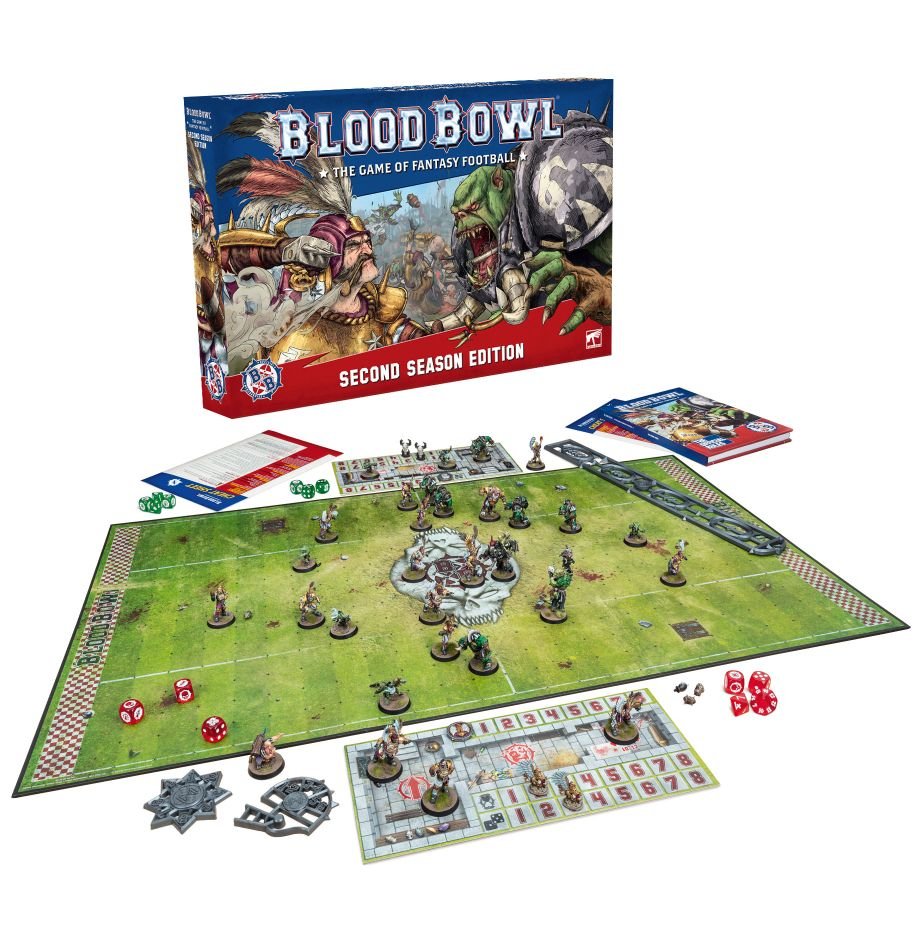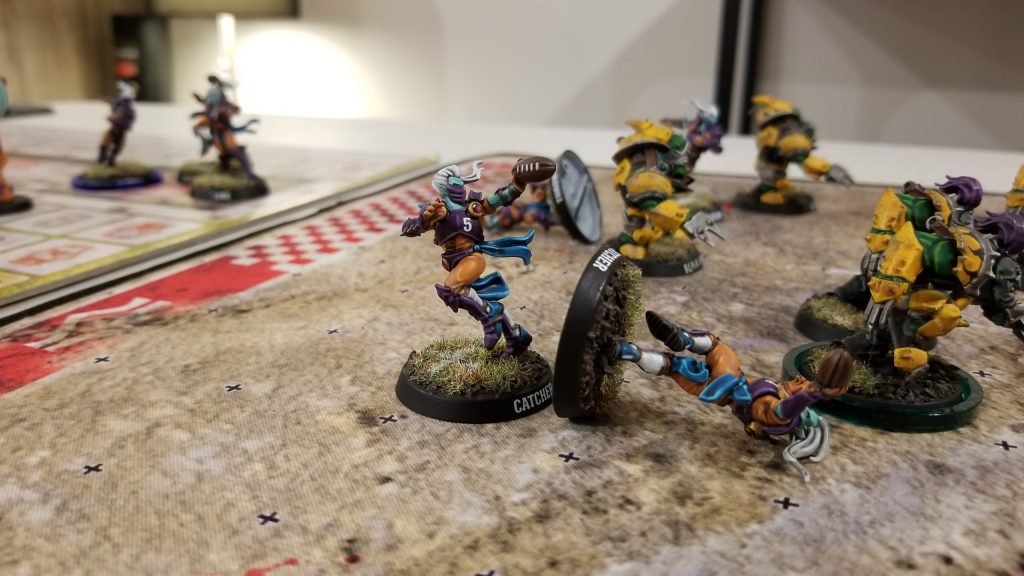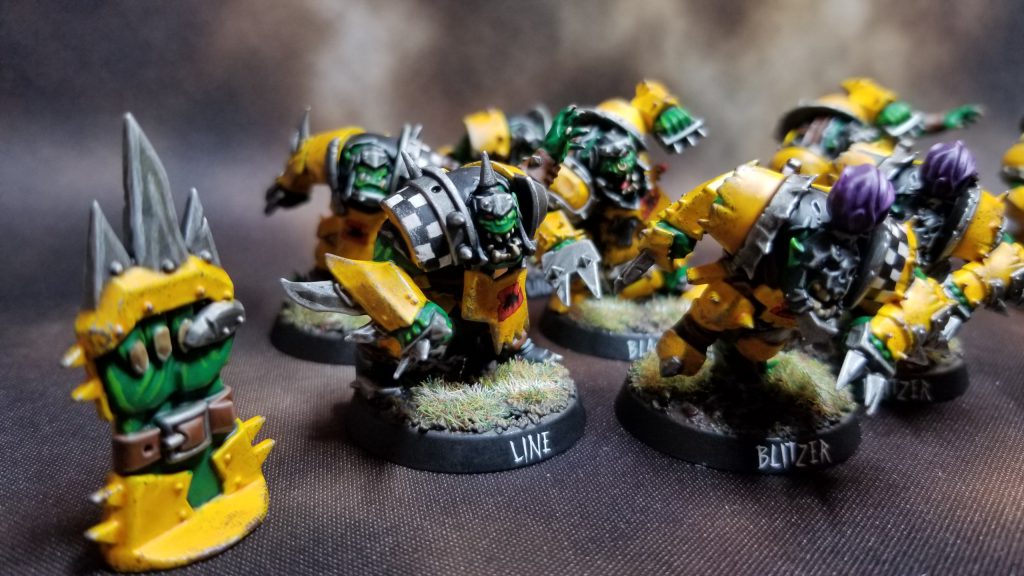Hey there, sports fans! Welcome to Goonhammer’s coverage of the new edition of Blood Bowl! We’ve got quite a few rabid Blood Bowl fans on staff, and we’re all very excited to ‘kick off’ coverage of what is some of the most fun you can have with a tabletop game. This article is geared towards Blood Bowl veterans, as I’ll be going through the new book with a fine-toothed comb and logging all of the changes. New coaches ought to go check out our Getting Started with Blood Bowl article for a more broad overview of the game.
Strap on those pads, Sports Fans! This article is going to be a lengthy one, as there are a ton of changes packed into the new edition of Blood Bowl. Most are pretty minor, but there are at least a few that will have big impacts on the game. If there’s something I missed or you have a question or concern, feel free to drop me a line over at contact@goonhammer.com and we’ll get it sorted! On to the changes!
We’ll dig deeper into the implications of these changes and how we feel about them and their impact on the game as a whole in our upcoming Blood Bowl round table article. Today we’re going to talk about the major changes to the game so that once you have your new rulebook in hand you can hit the ground running on games in the new edition.
Rules Changes
There are a number of core rule changes to be aware of with this edition, from minor but helpful tweaks to terminology and definitions – Deviate, Scatter, and Bounce are all clearly defined in the rules now, making it possible for later rules descriptions can refer to the term and not have to constantly redefine them – to major changes like the addition of the Passing Ability characteristic. Also on the terminology side is the addition of “Marked” players – A player in an opposing team’s player’s tackle zone is now said to be Marking that opponent. The function of tackle zones hasn’t changed though, only the term referring to them.
Player Characteristics
Agility (AG), Passing Ability (PA, more on that in a bit), and Armor Value (AV) have all changed to show target numbers instead of a numerical value, bringing them in line with Games Workshop’s more modern design sensibilities. That is, Instead of AV 9, now you have an AV of 10+. So, when taking an AG, PG, or AV test, coaches now refer to the target number on the player’s profile. This is especially good for AG, because the whole “minus the player’s AG from 7 and add or subtract X” thing was clunky and bad and this is much simpler to work with and teach new players. Similarly, minimum and maximum characteristics have been introduced. The main thing of note here is that the Movement Allowance (MA) max is 9, so no more MA 10 Gutter Runners crossing the entire field in a single activation. Sorry, Skaven fans! (Condit Note: Shit.) There’s also a characteristic improvement cap: You can improve a given characteristic twice, so a series of lucky rolls can only make that Human Catcher so hard to take down.
The Passing Ability (PA) Characteristic
Perhaps the single biggest change in the Second Season release is the introduction of the Passing Ability characteristic. Passing the ball is no longer linked to a player’s AG, but now refers to a player’s PA stat. Most Thrower characters have a PA of 3+, and Elves and Skaven come with a PA of 2+. Catching the ball is still an AG test. Some players have a PA of ‘-’, meaning that if they try to pass the ball, they will automatically fumble the pass, but they can hand off as normal. This fundamentally changes the game in a lot of ways, especially for high-AG teams who were used to being able to rip off a pass with anyone on their team. We’ll talk more about it in our upcoming round table article on the new edition, so stay tuned for that.
Pregame
A number of pregame/outside-the-game factors have changed. The Second Season rules introduce the Current Team Value characteristic, which is your team’s Team Value minus any players who are missing time due to injury. It’s also used to calculate petty cash for inducements instead of Team Value. The way teams determine Fan Factor has also changed – now the number of fans who show up to your games is based on your Dedicated Fan number (a group of supporters who you can purchase at team creation and will grow or shrink depending on your success, just like the old Fan Factor stat) plus D3 fairweather fans times 1,000. This is how many fans are cheering for your team for that game.
Of course, the support of your fans won’t always be enough to see you through, especially when you’re facing a team that’s much more developed than yours. In those situations, you’ve got no choice but to offer Prayers to Nuffle and hope for the best. The greater the difference between your team values, the more times you get to roll on the Prayers to Nuffle table which is a d16 table with buffs or debuffs that last for 1 drive, a half, or the whole game. Some of these even punish your opponent for Stalling, which is when a team fails to score when it has the opportunity. This table is an interesting way to give the underdog a boost, and throwing yourself on the whims of the dice in a rough situation is honestly Blood Bowl at its purest.
The Kickoff Table
Just about every entry on the Kickoff Table has changed, even the name: – it’s called the Kick-off Event Table now! Lots of the old events are still here – Get the Ref, High Kick, Brilliant Coaching, and Changing Weather all return pretty much unchanged, and others have changed significantly – Quick Snap lets the receiving team move D3+3 players one square instead of their whole team and those players have to be Open (i.e. not Marked), while Blitz likewise gives D3+3 Open kicking team players a turn. Similarly, Solid Defence now lets D3+3 players be repositioned. On the whole the table is a lot less game-breaking than its predecessor, and is less likely to put you completely down from the jump. Also the Throw a Rock event has been replaced with an event where a player gets into a fight with a ref, with the potential for that player to be Stunned or Sent Off as if they were caught fouling. So no more players killed by thrown rocks – Hooray!
During the Game
In the games proper there are a lot of little adjustments that amount to major changes in how the game is played. Going For It has been renamed Rushing and you can now jump over prone players by passing an AG test to do so, making the pitch much more navigable for less agile/slower teams.
Passing and Catching
The passing game has changed quite a bit, with minor tweaks throughout the process and a few extra modifiers that make things a little more interesting. For the passer, accuracy modifiers are now one worse across the board, with Quick Passes at +/-0, through to Long Bombs at -3. And if you fail, the way you failed matters more now. A natural 1 is still a fumble, but any other result that winds up being a 1 after modifiers becomes a Wildly Inaccurate pass that deviates like a kick-off before landing and bouncing. Catchers now get a straight-up AG roll to catch, with penalties for trying to catch anything other than a Pass (such as Scattered, Deflected, or bouncing balls), and for having opposing players right next to you (Marking you).
When the ball is in transit, though, the defending team’s options have been completely reworked into a new option: Pass Interference. If you’re a fan of American Football, you’re probably cringing right now, but in this case it’s actually the new name for the process of trying to Intercept a Pass. As before, a single Player under the Range Ruler can try to Interfere. However, rather than just rolling to Intercept, you roll to see whether your Player Deflects the Pass, making an AG check at a penalty depending on how accurate it was, starting at -3 for an Accurate Pass through -1 for a Wildly Inaccurate Pass. If you make the roll, the Pass is said to be Deflected, and the Interfering player must attempt to catch the ball using the normal rules for catching. Otherwise, it scatters. This change rocks, as it gets rid of the extremely wonky interception-roll-before-the-pass-roll-is-even-made that plagued previous editions. Plus, your passer’s PA and skills will impact how likely their throw is to be Deflected, making those skills a bit more impactful.
On that note, throwing a team-mate basically mirrors the changes to passing, but now you can throw friendly prone and stunned players – though note that they cannot attempt to land safely! I should not have to explain to you why this change is completely awesome.
Injuries and Casualties
The injuries system also got a big overhaul, including the Casualty table. Stunties have their own table for injuries now that shifts outcomes down by one, and the new Casualty table uses a d16 instead of a d68. The net result of this is that while your players are less likely to be die (12.5% vs. 16.7%), they’re much more likely to miss a game or get a permanent injury – their chances of being badly hurt dropped from 50% to 37.5% and their chances of a niggling or lasting injury more than doubled. This is a huge problem for low-AV teams and teams that rely on smaller rosters of more elite players. It also benefits punch-first teams who can incapacitate opposing players in league play, since those teams are likely going to end up missing players in their next game.
Other Stuff
A few other things to note – you can now Argue the Call with regards to Secret Weapons, which is good for Grot teams. And they’ve introduced a new mechanic called Stalling. If the active player chooses not to score when they can, now that’s called Stalling. On its own, Stalling means nothing, but there are Prayers to Nuffle and other things that will negatively act upon players who are Stalling.
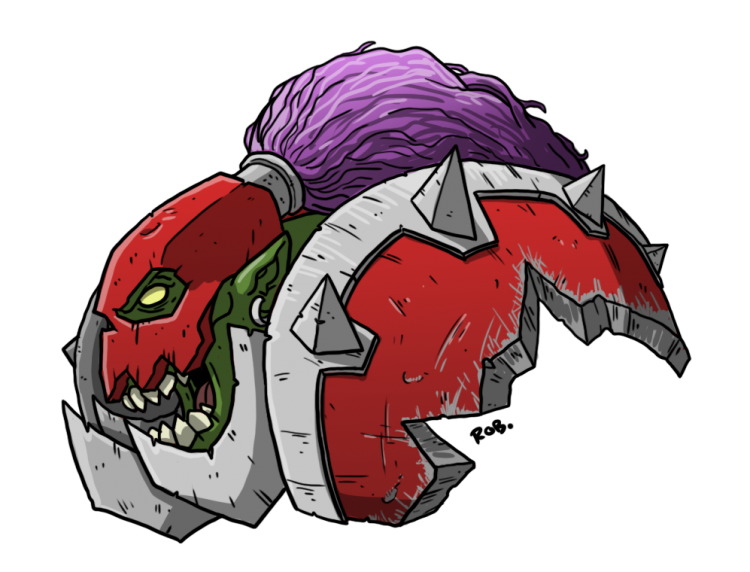
After the Game
Let’s talk about what happens now after the lights go off and the fans leave.
Winnings
How you accrue winnings in league games has changed – now you add up both teams’ Fan Factors to get an overall Fan Attendance number and earn winnings based on overall Fan Attendance and how many touchdowns you scored. Then your team’s Dedicated Fans total is updated based on a D6 roll. the net result is that you’re still incentivized to score during games, which helps blunt the force of the blows that heavier punch-first teams will inflict on your more finesse-oriented teams when you need to hire replacement players to fill out your roster.
Star Player Points (SPP)
There are some new ways to earn Star Player Points – throwing teammates will net you SPP now, and so will deflecting a pass, giving agile defenders some value. MVP awards are now worth 4 SPP and they’re still random. Advancements have also completely changed now, losing the familiar 2D6 roll and moving a Necromunda-like spending system. When advancing your players you have four advancements to choose from, and the costs for each of these vary, so randomly selecting skills is cheaper than choosing them, and your second through sixth advancements will successively increase in costs. Randomly selecting a primary skill is the cheapest, starting at 3 SPP and going up to 15, followed by either choosing a primary skill or randomly generating a Secondary skill (6-30), Choosing a secondary skill, (12-40), and randomly improving a characteristic (18-50). Characteristic improvements are rolled on a d16 table and for all but one of them you can opt to pick a secondary if you don’t like what you end up with.
Value increases have also gone up for players improving their characteristics and skills and your star players are going to increase in cost much more quickly than before – you’ll spend $10k more for randomly selected primary skills or +1 AV, while choosing primary and adding secondary skills or boosting other stats will cost you more – usually $20k or $40k. On the whole players are going to get more expensive more quickly than before, making managing your money with improving players on your roster much trickier. Still, even with these variable costs (random skills increase your cost less than choosing) you’ll always want to choose your skills.
Skills
A whole lot of skills have changed, and there are even a bevy of brand new ones to throw in the mix. Some of the changes are just new names – On the Ball is the renamed version of Pass Block and Unchanneled Fury is the renamed version of Wild Animal – but there are a number of functional changes here.
Returning Skills
Leap is a big one here – it works like jumping over a Prone or Stunned player, but you can jump over unoccupied squares or squares with a Standing player, and you can reduce a negative modifier to the AG test to leap by 1 (to a minimum of -1), meaning it’s no longer successful on an unmodified AG roll – the player is subject to Marking. Leap is commonly used by Wardancers to break cages. In a regular cage formation, the Leaper would have to Leap into a square Marked by 3 different players. Normally, that would incur a -3 negative modifier to Leap successfully. The Leap skill reduces that modifier by 1, so the Wardancer must still deal with a -2 to the AG check to successfully land the Leap. A Wardancer has a 2+ AG, so they’d land on a 4+. Sneaky Git also changed – the git is no longer sent off on a double, regardless of whether the Foul roll is successful and they can complete their movement after the Foul is made.
Kick Team-Mate also got a major change, and can be performed in addition to a Throw Team-Mate action. Kicking a team-mate acts just like a Throw Team-Mate action, but a fumbled kick will immediately send the kicked player to the KO box or the Dead and Injured box. This can only be used on Standing team-mates.
There are a ton of little changes as well, quality of life and balance stuff like Frenzy not being able to be combined with Grab, or Prehensile Tail affecting Jumps and Leaps in addition to Dodges.
New Skills
There are a lot of new skills to get excited about as well. On the “defensive” side of things Safe Pair of Hands prevents the ball from scattering if a player with this skill has control of the ball and is Knocked Down or Placed Prone – the controlling player chooses where to place the ball in an adjacent square. Iron-Hard Skin negates the effect of Claws. And Defensive negates Guard. On the offensive side of things, Cannoneer gives a similar effect to Accurate but for Long Passes and Long Bombs, Arm Bar works like Mighty Blow but triggers when an opponent Falls Over instead of being Knocked Down, and Running Pass lets you finish a move after throwing a Quick Pass.
Inducements
Most of the Inducements remain the same, but there are a couple new ones of note. Weather Mages cost 30k gp to give the player a one-time action to change the weather during a turn and helpfully don’t count as wizards, so you can take both for your team. (In)famous Coaching Staff has a variable price and while right now it’s only available with Josef Bugman (rules provided), we’re hoping that we might see more infamous coaches being released in the future to make this more relevant. And Biased Referee is another variable price Inducement and also potentially foreshadows famous biased referees that we will (hopefully) see added to the game in the future. The “base” biased ref will monitor the opponent’s activities very closely, meaning a greater likelihood of being Sent Off, and will be more lenient with the team that hired them, giving a bonus to Arguing the Call.

The Teams
Each team has changed in some way. Most of the changes are minor, but when combined with the Skills changes, there are a few teams that operate on a different level in the new edition of Blood Bowl. In this section, we’ll outline the new team-wide special rules and talk about changes to each team, though we’ll cover the details of team-specific changes in some future articles on team tactics that go into more depth. For now we’ll do quickfire overviews that will help you figure out where to look for changes in the new rulebook.
Each team has a Regional Special Rule that governs which Star Players may be hired and may impact Inducement use. Star Player use is much more broad in this edition, with many teams getting access to certain players that they couldn’t hire in previous editions.
There are also a few Team Special Rules, representing various unique traits a team might have. They are:
- Bribery and Corruption: Reroll 1s on the Argue the Call table and may take some Inducements at a reduced price. If these teams ain’t cheating, they ain’t trying.
- Favored of…: Some specific Inducements are only available to teams that are Favored of one of the following: Chaos Undivided, Khorne, Nurgle, Tzeentch, or Slaanesh.
- Low Cost Linemen: Teams with this rule ignore their lineman’s cost when calculating CTV.
- Masters of Undeath: If a qualifying player from the opposing team dies during the game, the coach of a Masters of Undeath team may add a free Zombie linemen to their team for the remainder of the game. They can then choose to hire this player full time after the game.
Tiers
Another new development is the addition of team Tiers. Each team is sorted into Tiers that are based on the team’s relative difficulty level. Tier 1 teams are the most forgiving to play, and Tier 3 teams are not expected to win many games. They seem pretty accurate out of the gate.
Tier 1 Teams
Dark Elves
Dark Elf Linemen lost access to Passing skills as a Secondary skill choice and their Assassins got cheaper.
Dwarves
Blockers, Troll Slayers, and the Deathroller lost access to Passing skills as a Secondary skill choice, while Runners, Troll Slayers, and Deathrollers all went up in price.
Humans
Linemen and the Ogre lost access to Passing skills as a Secondary skill choice. Throwers and Catchers went up in price, Blitzers came down, and Human teams can now add a few Halfling Hopefuls, who are just regular Halflings.
Lizardmen
Saurus and Kroxigors lost access to Passing skills as a Secondary skill choice and Saurus went up in price.
Old World Alliance
Human Linemen, Dwarf Blockers, Troll Slayers, Dwarf Blitzers, Halfling Hopefuls, and Human Blitzers lost access to Passing skills as a Secondary skill choice and a bunch of shifts were made regarding Animosity for different players (some gained it, some lost it). Dwarf Blockers went up in price, lost Block and Tackle (!!!), but gained Arm Bar and Brawler, while Dwarf Runners and Troll Slayers also went up. And OWA coaches can choose between an Ogre or a Treeman as their big guys.
Orks
Animosity is now a factor on Ork teams. Ork linemen have Animosity towards each other, Throwers and Blitzers have Animosity towards all team-mates, and Big Un Blockers have Animosity towards each other. Big Un Blockers are basically the renamed Black Ork Blockers, who have their own team now. They’ve gained +1 MA. Team re-rolls changed in cost, Linemen, Goblins, and Big Un Blockers lost access to Passing skills as a secondary choice, Ork Throwers went down in price, and Trolls now have the Projectile Vomit skill.
Shambling Undead
Skeletons, Zombies, and Mummies lose access to Passing skills as a Secondary skill choice and the team comps have changed so you can’t go oops-All Zombies! anymore. Sad. Ghouls and Mummies went up in price.
Skaven
Linemen and Rat Ogers lost access to Passing skills, throwers went up in price and improved at passing (maybe the only formerly AG 3 player in the game to do so), Gutter runners went up in price, and Rat Ogres got totally screwed: Wild Animal is no longer in the game, and was replaced by Unchanneled Fury, which acts in the same manner. Rat Ogres, though, get the much worse Animal Savagery. So, keep those team-mates away from the Rat Ogre.
Wood Elves
Linemen and Treemen lost access to Passing skills as a Secondary skill choice, Throwers and Wardancers went up in price, and Catchers lost Sprint.

Tier 2 Teams
Black Orks
The Black Orks are a new team – they’re similar to Lizardmen in design, but slower and more skilled. Black Orks are designed to be excellent static blockers, and they come with Brawl and Grab, while Goblin Bruisers get the Thick Skull skill. Black Orks also have access to the “good” Troll who comes with Loner (3+), and they have Bribery and Corruption, which makes them just as good at getting away with Fouls as Goblins.
Chaos Chosen
Instead of only Minotaurs, Chosen teams may now choose between Trolls, Ogres, and Minotaurs for their big guy (Rob: yay!). They still have a limit of 1, though (Rob: boooo).
Chaos Renegades
Renegade Human Linemen lost access to Passing and Strength skills as Secondary skill choices and the team gained access to a Human Thrower with Animostiy (all team-mates), Pass, and Safe Pair of Hands. Renegade Goblins lost access to Strength skills as a Secondary skill choice (lol), Renegade Ork Linemen and Skaven lost access to Passing skills as a Secondary skill choice, Dark Elves and Trolls went up in price, and Renegade teams now have more options when choosing a big guy.
Elven Union
Linemen and Catchers lost access to Passing skills as a Secondary skill choice while Throwers and Blitzers got more expensive.
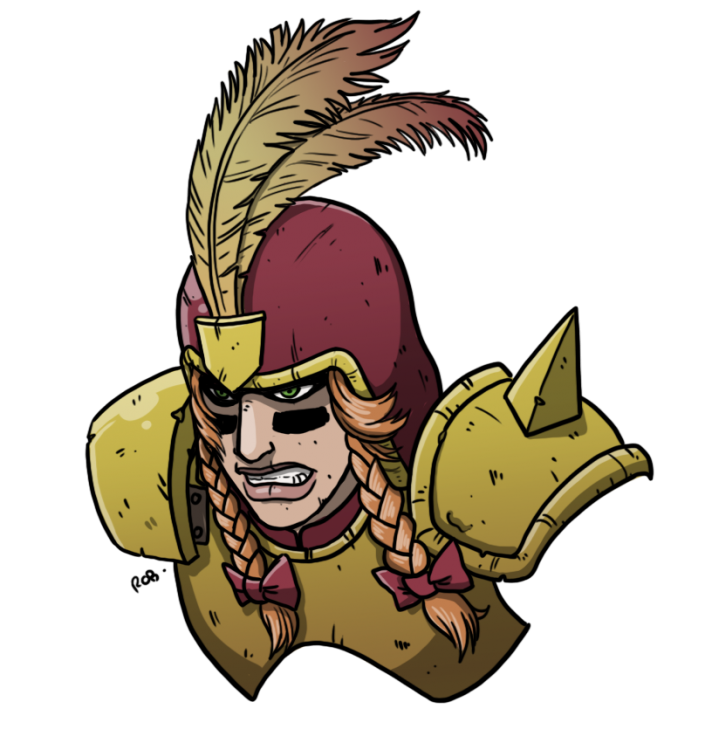
Imperial Nobility
This is another new team who are very similar to the now-defunct Bretonnian team. They’re an interesting team, and in particular Linemen with Fend and Bodyguards with Stand Firm will be great for slowing down cages. Noble Blitzers are excellent catchers, and have access to Agility skills as a Primary, so you’ll see a lot of Blodging Noble Blitzers in the wild. And the team can also take an Ogre, because why not?
Necromantic Undead
Zombies lost access to Passing skills as a Secondary skill choice, Ghouls/Werewolves/Flesh Golems all went up in price, and Wights are gone – they’ve been replaced with a new player type: Wraiths.
Nurgle
The Plague Ridden skill replaces Nurgle’s Rot for all players. It does the same thing – it’s just a new name. Rotters, Bloaters, and Rotspawn lost access to Passing skills as a Secondary skill choice, and Rotters and Pestigors went down in cost while Bloaters went up.
Underworld Denizens
Skaven Linemen become Skaven Clanrats. Clanrats only have Animosity towards Goblins. Goblins and Skaven Clanrats lost access to Passing skills as a Secondary skill choice. The team can now add Snotlings (0-6), Skaven Throwers went up in price and have a 2+ PA, while Gutter Runners also went up and the team gained access to Trolls and Rat Ogres.
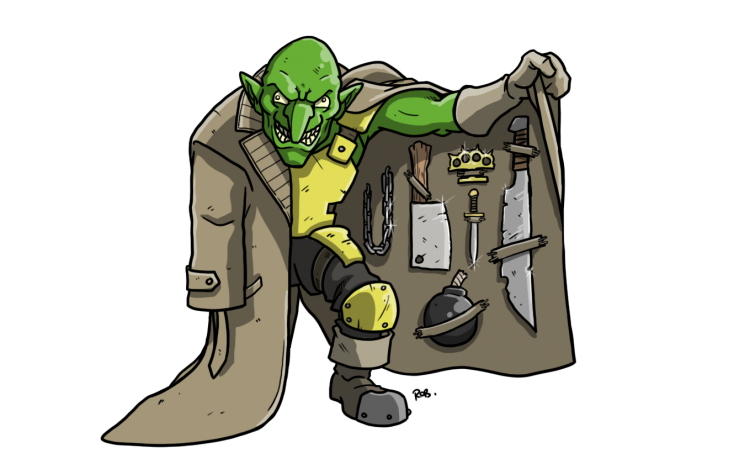
Tier 3 Teams
Goblins
Bommas, Pogoers (who gained the new Pogo Stick skill), and Trolls all went up in price, Fanatics lost access to Passing skills, and ‘Ooligans went down in price.
Halflings
Halfling Hopefuls and Catchers lost access to Passing skills as a Secondary skill choice and the latter went up in price.
Ogres
Gnoblars went down in price, lost Disposable (which no longer exists), and lost access to Passing and Strength skills as Secondary skill choices. Ogre Rat Punters went down in price.
Snotlings
Snotling Linemen went down in price, lost Disposable, and lost access to Passing and Strength skills as Secondary skill choices. Fungas Flingas, Fun Hoppas, and Stilty Runners lost access to Strength skills, Pump Wagons went down in price, and Trolls went up.
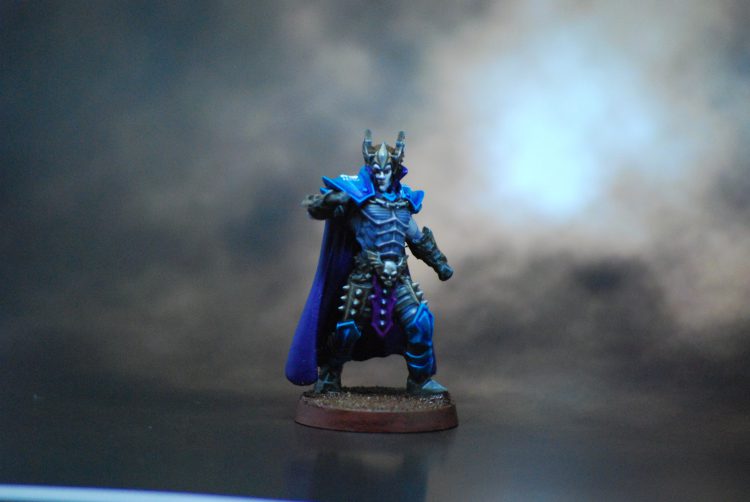
Teams of Legend
Tier 1 Teams
Amazons
Tribal Linewomen, Catchers, and Blitzers lose access to Passing skills as a Secondary skill choice while Throwers and Catchers went up in price.
Chaos Dwarves
All Chaos Dwarf players lost access to Passing skills as a Secondary skill choice. Minotaurs are now called Enslaved Minotaurs. They lose the non-existent Wild Animal skill, and gained the very awful Animal Savagery skill. Not great.
Norse
Norse Runners were renamed Norse Catchers. Norse Linemen, Catchers, Berserkers, Ulfwereners, and Yhetees lost access to Passing skills as a Secondary skill choice. Ulfwereners went down in price, and Yhetees saw some skills change.
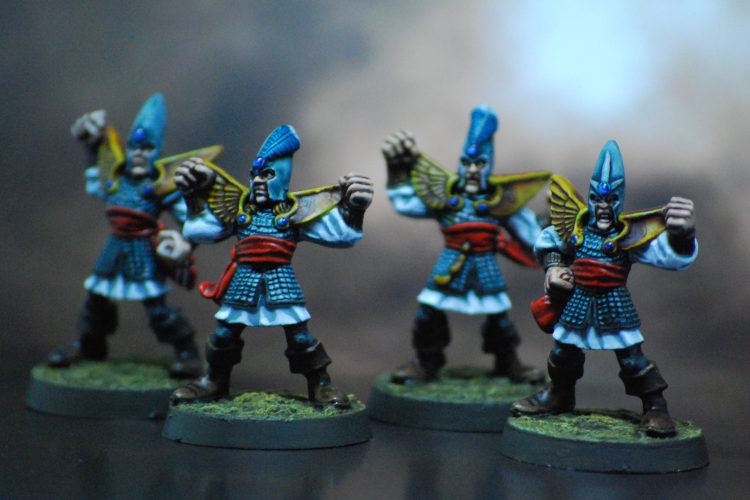
Tier 2 Teams
High Elves
Catchers lost access to Passing skills as a Secondary skill choice and Throwers went up in price and had some skills change.
Tomb Kings
Skeleton Linemen and Tomb Guardians lost access to Passing skills as a Secondary skill choice, and Throwers and Blitzers gained Thick Skull.
Vampires
Bloodlust is gone from the game, so all Vampires get Animal Savagery in what might be the gnarliest nerf ever. Just terrible. Thralls lost access to Passing skills as a Secondary skill choice.

Star Players
Almost every Star Player that didn’t currently have a model was removed from the Star Player list. Hopefully this is a portent of things to come, and we’ll see models for the Star Players who remained despite being model-less soon, but a lot of the old favorites are gone. Adios, Skitter Stab-Stab. We hardly knew ye.
That being said, Star Players now come with a cool one-use ability, and almost all of them have adjusted hiring fees. And, like I said up in Special Rules, teams have a lot more options when it comes to Star Players, so pay attention to who your favorite team can hire, as it may have changed. You’d hate to miss out on strong combos. Again, we’re going to avoid going into too much detail here and we’ll hit the specifics in future articles on individual teams, where we’ll cover the Star Player options those teams have available and how they fit into team strategies.
The Black Gobbo
Now separate from Grombrindal, the White Dwarf, the Black Gobbo can be hired by Badlands Brawl and Underworld Challenge teams for 225,000 gp. He’s an absolute terror who excels at throwing bombs, stabbing, and fouling. In fact, he’s so good he gives you extra fouls: The team that hires the Black Gobbo can perform two Fouls per turn, as long as one of them is done by the Black Gobbo.
Deeproot Strongbranch
Deeproot is a bit cheaper, and he can be hired by Halfling Thimble Cup and Old World Classic teams. Players thrown by Deeproot always land safely, which is pretty wild.
Eldril Sidewinder
Eldril plays for Elven Kingdoms League teams and became more expensive and can reroll a Hypnotic Gaze test once per game.
Glart Smashrip
Plays for Favored of… or Underworld Challenge teams and now has a one-use Frenzy skill.
Gloriel Summerbloom
Plays for Elven Kingdoms League teams, got cheaper, and has a one-use Hail Mary Pass skill.
Grak and Crumbleberry
These fellas count as two Star Players and can play for any team, with a penalty you’ll incur to the remaining one’s Loner skill (goes from 4+ to 2+). They’re more expensive.
Gretchen Wachter “The Blood Bowl Widow”
Gretchen’s a bit cheaper and can do a super Dodge once per game.
Griff Oberwald
Griff has a sweet new model with the Second Season boxed set and has gotten cheaper. On top of that he gets a free personal reroll once per game.
Grim Ironjaw
Grim Ironjaw plays for Halfling Thimble Cup, Old World Classic, or World’s Edge Superleague teams and gets a once per game Mighty Blow against a player with ST 5 or above.
Hakflem Skuttlespike
Hakflem got cheaper and plays for Favored of… and Underworld Classic teams. He can steal the ball from a team-mate once per game.
Helmut Wulf
Helmut can play for any team and can use his Pro skill to reroll an armor roll once per game.
Karla Von Kill
Karla got cheaper and can double her opponent’s Strength on a successful Dauntless check once per game.
Lord Borak the Despoiler
Lord Borak plays for Favored of… teams and got significantly cheaper while gaining the Sneaky Git skill (Rob: Hell yeah). He also gives his teams an extra team Reroll.
Mighty Zug
Plays for Halfling Thimble Cup, Lustrian Superleague, and Old World Classic teams and got cheaper while gaining a one-time bonus to Mighty Blow.
Morg ‘n’ Thorg
Morg ‘n’ Throg’s hiring fee dropped down to 90,000 gp (!). He can play for any team except except Sylvanian Spotlight teams, and he gets a one-use reroll on a Pass or Throw Team-mate action.
Roxanna Darknail
Roxanna is more expensive and gets a one-use Sprint per game.
Rumbelow Sheepskin
Gets a one-use Mighty Blow.
Skrull Halfheight
Skrull is quite a bit cheaper and gets a one-use super Pass.
The Swift Twins
These count as two Star Players, with a penalty if one is KO’d or suffers a casualty during the game. Their AG has also changed a bit and they’re much cheaper to field.
Varag Ghoul-Chewer
The other Star Player with a great new model in the Second Season boxed set, Ghoul-Chewer is a beast, with more ST and the ability to get a one-time bonus to Mighty Blow. He’s a bit cheaper now as well.
Grombrindal, The White Dwarf
Now separate from the Black Gobbo, Grombrindal can be hired by Halfling Thimble Cup, Lustrian Superleague, Old World Classic, or World’s Edge Superleague teams. He’s Tough and hard-to-shift and once per turn, Grombrindal can give an adjacent friendly a skill chosen from a small (but solid) set until the end of their activation.
Willow Rosebark
Now plays for Elven Kingdoms teams and can double her opponent’s Strength on a successful Dauntless check once per game.
Zolcath the Zoat
Also blessed with an amazing upcoming model, Zolcath’s hiring fee dropped and it gained a one-use Hypnotic Gaze.
Conclusion
There’s a lot to pore over with the new edition and some real big changes to the way the game plays to grapple with. If you’re finding it all a bit daunting, don’t despair – we’ll be covering more over the next few weeks, taking deeper dives into the mechanics, the teams, and league play and looking at what we love and don’t love about the new rules.
Well, Sports Fans, we hope you enjoyed that extremely long article! If you have any questions or concerns, hit us up at contact@goonhammer.com and make sure to come one back for more Blood Bowl coverage!
